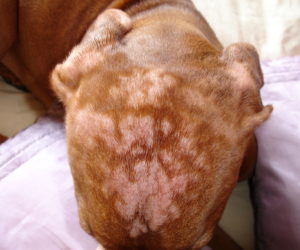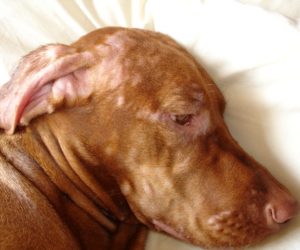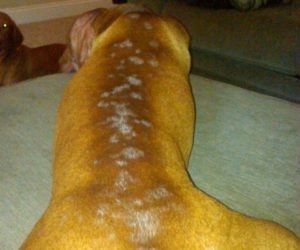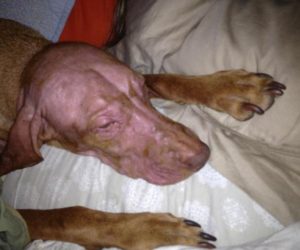Sebaceous Adenitis is an inflammatory disease process – directed against the skin’s sebaceous glands, resulting in their destruction. Sebum production is compromised and scaly lesions result. These mostly affect the trunk, head and ears. Pruritis (itchiness) is common. Diagnosis can be confirmed by a punch biopsy of an affected part of the skin. Sebaceous Adenitis (SA) is a veterinarily acknowledged predisposition in vizslas. You can read more HERE about diagnosis and treatment – which may be topical or systemic.
Conventional therapies for SA often involve the use of steroids but vizsla owners are reporting great successs with a less invasive approach.
These are pictures of Maddy






